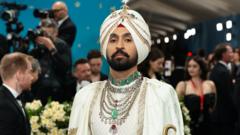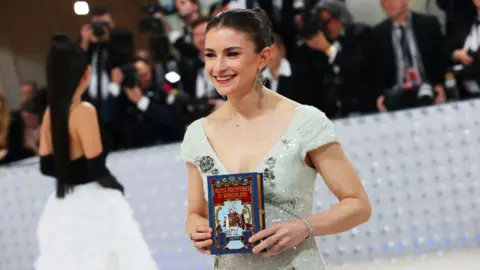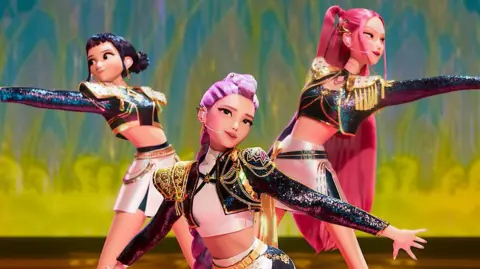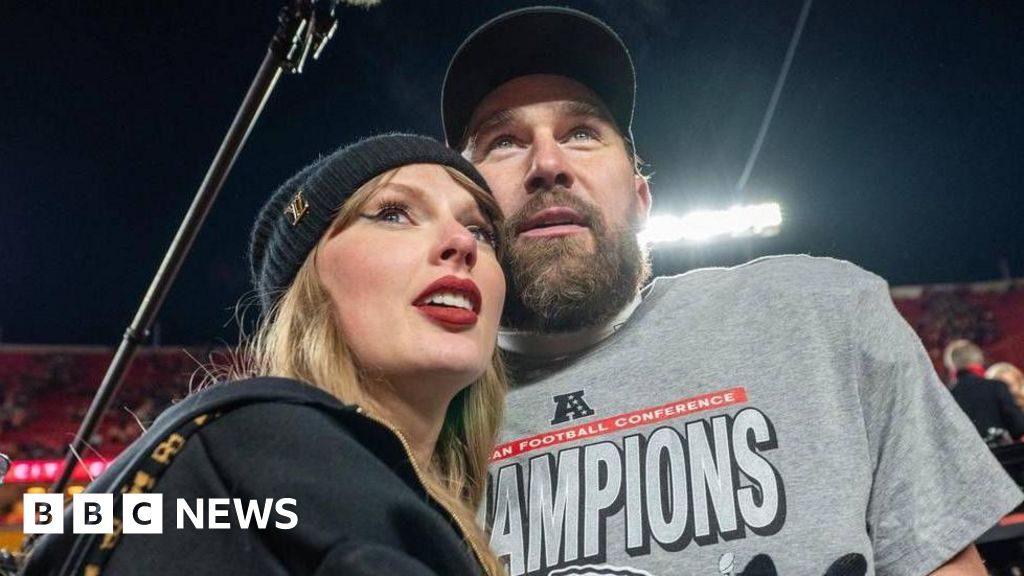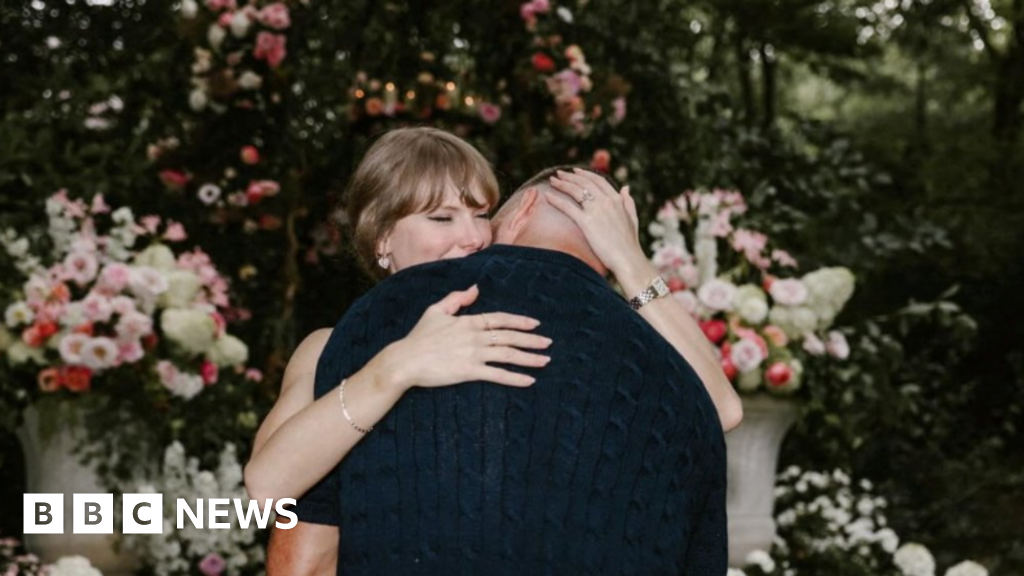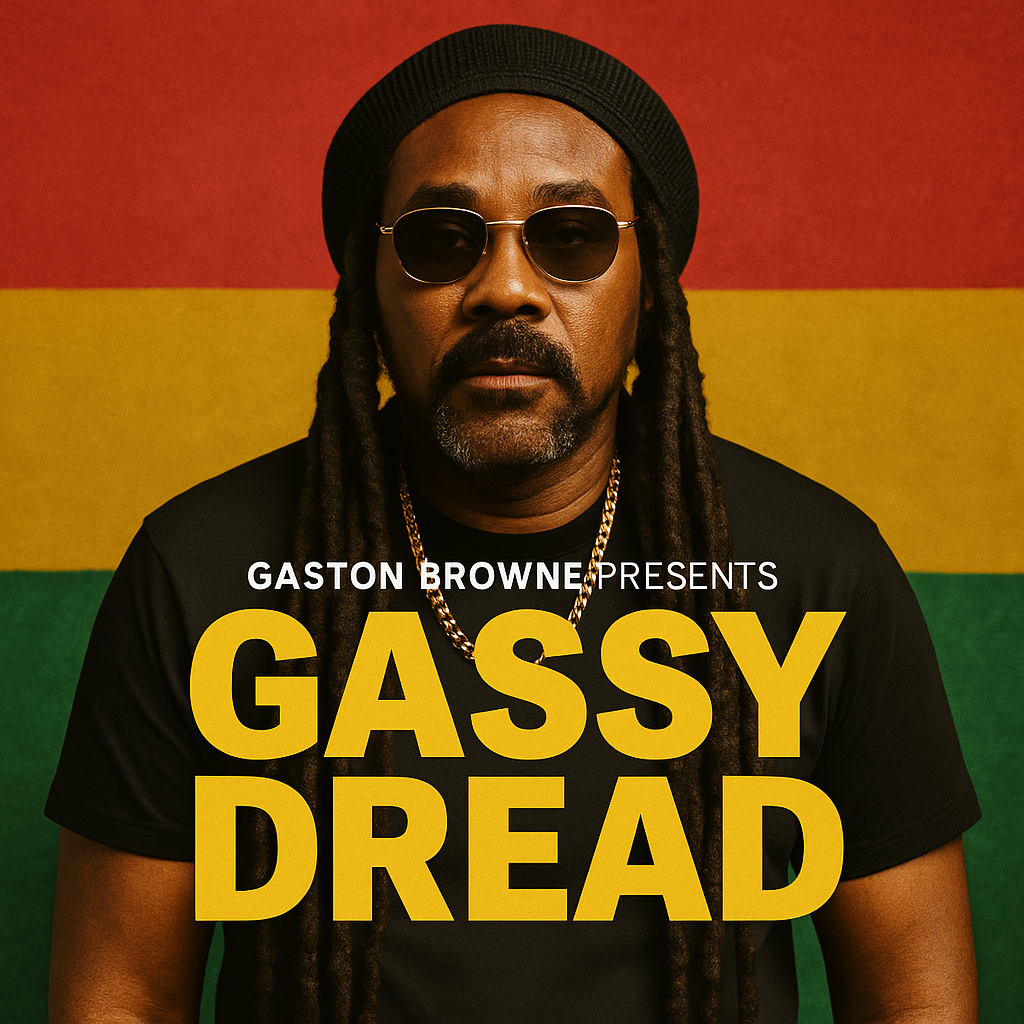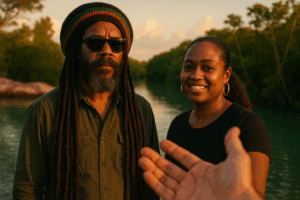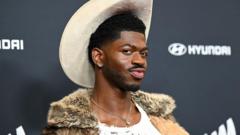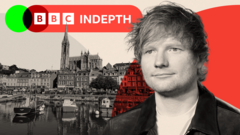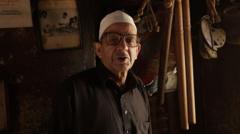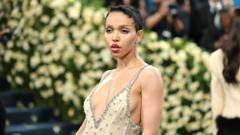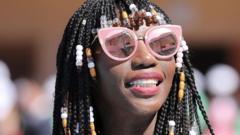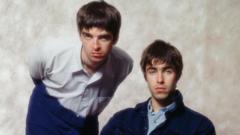As Punjabi hip-hop artists gain global prominence, they are reshaping bhangra fashion in innovative ways. A prime example is singer Diljit Dosanjh, who made a striking impression at the Met Gala with his opulent attire that embodied the essence of an early 20th-century maharajah. His ensemble, designed by Prabal Gurung, featured a luxurious ivory and gold palette, complete with a feathered turban and a unique diamond necklace paying homage to Punjabi royalty. This fashion statement did not just stop at eye-catching visuals; it also resonated deeply with the rich heritage of Punjab, displayed through delicate Gurmukhi embroidery.
Dosanjh is notably the only Punjabi artist to perform at Coachella, and his fashion choices reflect the broader trends within Punjabi music. He is a trailblazer in merging traditional Punjabi garments with contemporary elements—often donning baggy trousers, chunky sneakers, and vibrant turbans, creating a fusion that appeals to a global audience. The bhangra revival is palpable, as events such as high-energy competitions in California now see performers in modern athletic shoes, while European gatherings showcase the bright and eclectic fashion of Punjabi youth.
Moreover, other influential singers like Jazzy B and Badshah are also steering fashion trends among young Punjabis with their iconic accessories and clothing styles. Jazzy B's oversized rings and Kanda pendants, alongside Badshah’s trendy eyewear and Honey Singh’s hoodies, are becoming staples in the wardrobe of many. The transformative journey of Punjabi fashion has reached new heights, reflecting an aspiration that resonates across the global Punjabi diaspora.
Cultural analysts suggest that this shift in aesthetics stems from a blend of traditional Punjabi heritage and Western pop culture influences, especially among artists who have established their careers abroad. As art historian Alka Pande states, Punjabi men are known for their creativity, emblematic of a culture that embraces hybrid expressions while retaining its unique identity.
The acknowledgment of this new wave of fashion and music began in the early 2000s when luxury brands made their way into Punjab, representing an aspirational message for the region's largely agrarian community. Pop artists began to embody a global consumer identity that intertwined celebration and resistance against traditional norms. As celebrated singer Rabbi Shergill noted, this fashion evolution is a reaction to the world of hyper-capitalism.
Interestingly, despite the infusion of luxury and contemporary styles, Punjabi hip-hop maintains a certain androgyny that captures the attention of diverse audiences. Artists such as Dosanjh continue to project their identity proudly, shown vividly in his remarkable Met Gala appearance.
The impact of these style changes is also visible in everyday Punjabi attire, which now includes items previously considered unconventional for performance, such as sneakers and graphic tees. Harinder Singh, owner of fashion brand 1469, notes that these new trends—from vibrant turbans to modern accessories—have created a greater demand in local markets.
As young performers step onto stages across India, they are often inspired by the evolving styles of iconic musicians, infusing their personal flair into traditional looks. With each performance, they not only express individuality but also contribute to a collective cultural narrative, defining the modern Punjabi identity with rhythm and style.
This transformative era marks an exciting time for Punjabi music and its fashion, revealing a rich cultural tapestry that resonates with both the diaspora and global audiences alike. In celebrations of tradition and innovation, Punjabi hip-hop and bhangra dance unapologetically into the future.
Dosanjh is notably the only Punjabi artist to perform at Coachella, and his fashion choices reflect the broader trends within Punjabi music. He is a trailblazer in merging traditional Punjabi garments with contemporary elements—often donning baggy trousers, chunky sneakers, and vibrant turbans, creating a fusion that appeals to a global audience. The bhangra revival is palpable, as events such as high-energy competitions in California now see performers in modern athletic shoes, while European gatherings showcase the bright and eclectic fashion of Punjabi youth.
Moreover, other influential singers like Jazzy B and Badshah are also steering fashion trends among young Punjabis with their iconic accessories and clothing styles. Jazzy B's oversized rings and Kanda pendants, alongside Badshah’s trendy eyewear and Honey Singh’s hoodies, are becoming staples in the wardrobe of many. The transformative journey of Punjabi fashion has reached new heights, reflecting an aspiration that resonates across the global Punjabi diaspora.
Cultural analysts suggest that this shift in aesthetics stems from a blend of traditional Punjabi heritage and Western pop culture influences, especially among artists who have established their careers abroad. As art historian Alka Pande states, Punjabi men are known for their creativity, emblematic of a culture that embraces hybrid expressions while retaining its unique identity.
The acknowledgment of this new wave of fashion and music began in the early 2000s when luxury brands made their way into Punjab, representing an aspirational message for the region's largely agrarian community. Pop artists began to embody a global consumer identity that intertwined celebration and resistance against traditional norms. As celebrated singer Rabbi Shergill noted, this fashion evolution is a reaction to the world of hyper-capitalism.
Interestingly, despite the infusion of luxury and contemporary styles, Punjabi hip-hop maintains a certain androgyny that captures the attention of diverse audiences. Artists such as Dosanjh continue to project their identity proudly, shown vividly in his remarkable Met Gala appearance.
The impact of these style changes is also visible in everyday Punjabi attire, which now includes items previously considered unconventional for performance, such as sneakers and graphic tees. Harinder Singh, owner of fashion brand 1469, notes that these new trends—from vibrant turbans to modern accessories—have created a greater demand in local markets.
As young performers step onto stages across India, they are often inspired by the evolving styles of iconic musicians, infusing their personal flair into traditional looks. With each performance, they not only express individuality but also contribute to a collective cultural narrative, defining the modern Punjabi identity with rhythm and style.
This transformative era marks an exciting time for Punjabi music and its fashion, revealing a rich cultural tapestry that resonates with both the diaspora and global audiences alike. In celebrations of tradition and innovation, Punjabi hip-hop and bhangra dance unapologetically into the future.

